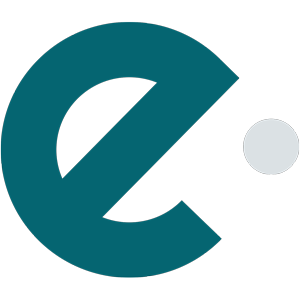website design
A marketing website about an advanced digital product that has target audiences of different levels of technical maturity.
Autodesk is a global software company that helps their customers to design and make anything from greener buildings to mesmerising blockbusters.
One of their newest products, Autodesk Tandem, is a digital twin solution designed to deliver smarter buildings and operational excellence. By connecting data from the building’s lifecycle within one dynamic, digital replica, actionable insights are always at the users’ fingertips.
The product has evolved since it’s launch in 2021, but the concept of digital twins was still quite new to the industry. The ask was to update the marketing website to reflect the product capabilities, and educate stakeholders with different level of understanding, at every stage of the building’s lifecycle: from investment and conception, to construction and maintenance.
THE CHALLENGE
The website aims to enhance engagement, drive traffic, and boost registration and sales within the Architecture, Engineering, and Construction (AEC) industry, as well as among building owners and operators.
In redesigning the marketing website, the copywriter and I prioritised catering to both AEC members and building owners/operators with varying levels of technical expertise, each possessing different skillsets, motivations, and challenges. I aimed to design a user-centric experience focused around Tandem's unique capabilities for creating a buildings’ digital twin.
My vision was clear: crafting a seamless experience for visitors to navigate information about the software’s potential, and providing clear guidance on its usage, across all devices. I cut through clutter by streamlining the user journey and ensuring every piece of content served a purpose. Plus, I ensured the design reflected the high standards of Autodesk's portfolio and design library.
DISCOVERY AND RESEARCH
At the project's outset, I swiftly developed three distinct personas: a senior architect, a building owner, and a building manager. Each persona was crafted by blending insights from interviews with resources from the Autodesk global persona library to accurately reflect the diverse skillsets, motivations, and challenges of our target audience.
Additionally, I created detailed customer journey maps for each persona, providing valuable insight into their actions, needs, and emotions. These maps helped us understand where the marketing website intersects with the user's journey, enabling us to make informed decisions and deliver an exceptional user experience.
Throughout the design process, I remained focused on these, ensuring every decision was rooted in meeting the needs and expectations of our users. This user-centric approach guided my efforts, driving me towards achieving our project goals effectively.
STRATEGY AND PLANNING
After gaining a better understanding of the audience, I conducted a comprehensive content inventory and audit of the existing website. The aim was to determine what content could be retained, identify missing elements, and highlight areas requiring improvement to better serve our target audience. While some content remained relevant, others proved redundant, and it became evident that streamlining the new website would not only alleviate cognitive overload for users but also enhance productivity.
To facilitate this process, I meticulously analysed and documented the content of each existing page, categorising the type of message conveyed in every section. Additionally, I noted the personas that would benefit from each message, using designated coloured dots for quick identification.
Having audited the content, I proceeded to organise and structure the new website, starting with the homepage. I recommended the type of messaging and outlined the information to be included, while also identifying any content gaps compared to the previous website.
Content requiring further explanation beyond what the homepage should provide prompted the creation of additional pages to address any gaps in the user journey.
Next, I compiled a list of user needs, assigning each a unique ID number and identifying which personas would benefit from resolving them. I integrated these ID numbers into the new website structure to make sure all needs were addressed.
THE SOLUTION
I crafted mock-ups of the new designs, addressing the challenge of simplifying a complex product for individuals with varying levels of technical expertise. This presented an ideal opportunity to explain how Tandem could benefit all stakeholders across the building's lifecycle, from inception to realisation. By breaking down Tandem's workflow into milestones of a commissioned project, I enabled each user type to understand when they would utilise and benefit from the software.
In addition to offering a resource library to support users in onboarding and utilising Tandem, I acknowledged the significance of addressing a fundamental question for novices: what is a digital twin? To cater to those in the early stages of exploring the concept, I ensured that newcomers could delve deeper into the topic while allowing uninterrupted navigation for others on the website.
In an emerging market, establishing trust in the value of a new product is paramount. To achieve this, I leveraged statistics and testimonials from industry leaders to validate the product’s worth.
As the release date approached, close collaboration between the development team and myself became pivotal in delivering a responsive and fully functional website. Initially, we conducted weekly meetings to share progress updates and discuss design modifications. As the deadline loomed, these meetings intensified in frequency, supplemented by rigorous quality assurance rounds.
THE OUTCOME
The primary objective of this project was to revamp the marketing website to enhance user engagement, drive traffic and increase registrations, ultimately leading to more sales. The focus was on delivering a streamlined experience tailored to meet the needs and expectations of Autodesk Tandem users.
Within the first 6 months following the redesign launch, the website recorded significant improvements. Organic traffic saw a remarkable increase of 164.34%, while user engagement levels surged with an average session duration exceeding 3 minutes. This represented a growth of 285.79% compared to the previous 6 months.

